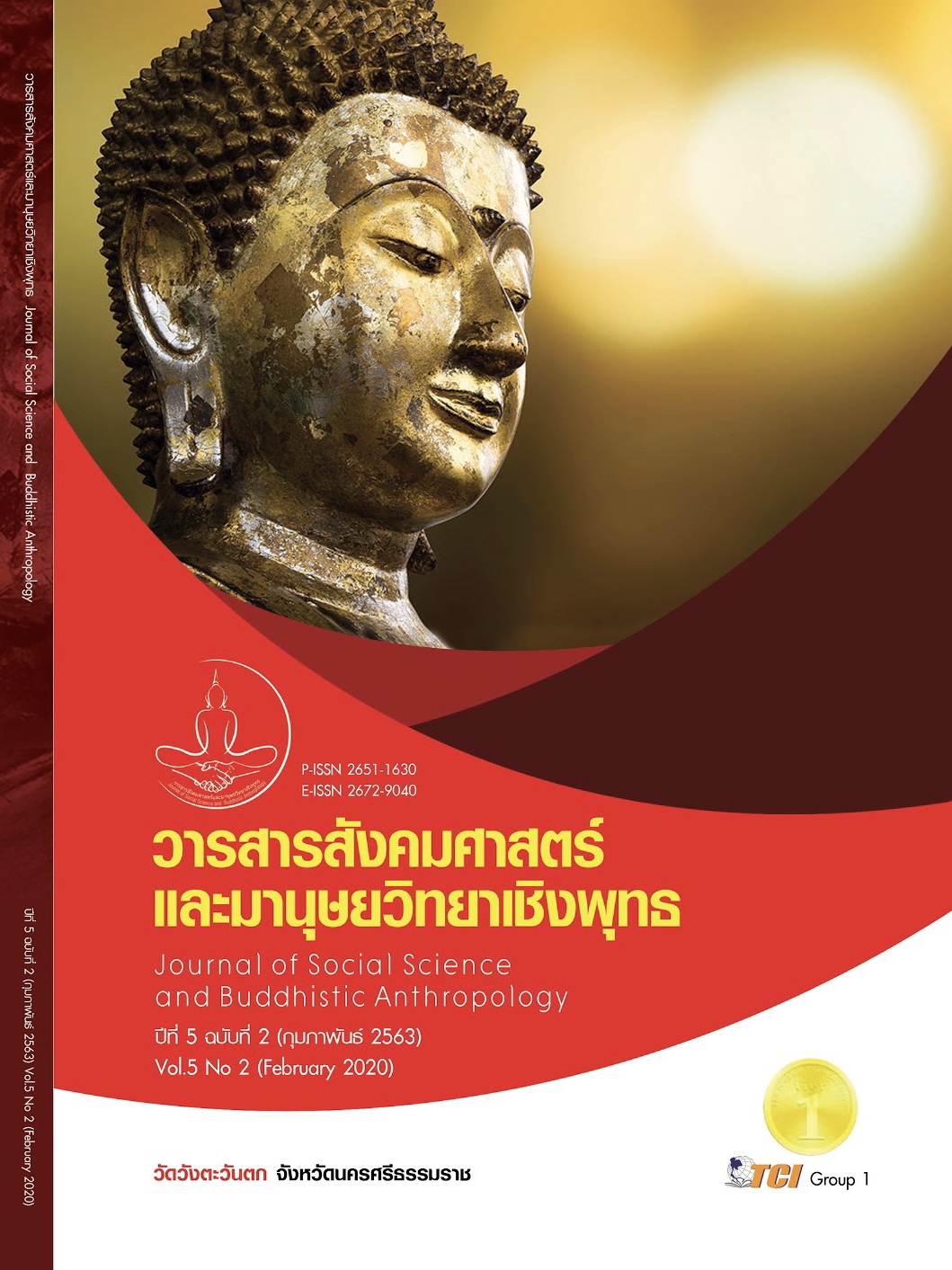GUIDELINES IN PROPOSING THE KAMMA HARMONIZED WITH CURRENT THAI SOCIETY
Keywords:
Guidelines, Kamma Presentation, Current Thai SocietyAbstract
The research paper ‘Guideline in Proposing the Kamma Harmonized with Current Thai Society’ have three objectives: 1) to study and analyze the teachings on Kamma in Theravada Buddhist scriptures; 2) to study and analyze the concept on Kamma appearing in the present Thai society; and 3) to present the guidelines for presenting Kamma conforming to the present Thai society. This research is documentary research which had the data collection employed from the teachings on Kamma in Theravada Buddhism that was compiled from the Thai Tipiṭaka. While the concepts on Kamma appearing in the present Thai society were collected from 100 books on Kamma. For the results of the study, the researcher has presented two important principles as the guidelines for presenting ‘Kamma’ as follows: 1) a study of Kamma and considering Kamma referring to the explanation of Kamma and its results that occur in daily life, which is suitable for those who still do not believe in the law of Kamma; and 2) the explanation of Kamma in terms of reincarnation by explaining the result of Kamma that is the same in all worlds, which is suitable for those who have faith in Buddhism. After learning about Kamma, the learner must consider Kamma by using one own’s experiences to consider whether it is in accordance with what one has studied. The tools used for considering Kamma are observation, questioning, and finding answers based on the analytical reflection (Yonisomanasikāra), which will allow one to be aware of Kamma before developing into the belief in Kamma.
References
พระพรหมคุณาภรณ์ (ป.อ.ปยุตฺโต). (2551). เชื่อกรรม รู้กรรม แก้กรรม. กรุงเทพมหานคร: พิมพ์สวย.
พระพรหมคุณาภรณ์ (ป.อ.ปยุตฺโต). (2559). พุทธธรรม ฉบับปรับขยาย. (พิมพ์ครั้งที่ 45). กรุงเทพมหานคร: สำนักพิมพ์ผลิธัมม์.
พระพรหมบัณฑิต (ประยูร ธมฺจิตฺโต). (2556). ปลดบ่วงชีวิต พิชิตกรรม. นนทบุรี: เชนปริ้นติ้ง.
พระพุทธโฆสเถระ. (2556). คัมภีร์วิสุทธิมรรค สมเด็จพระพุฒาจารย์ (อาจ อาสภมหาเถร) แปลและเรียบเรียง. (พิมพ์ครั้งที่ 11). กรุงเทพมหานคร: บริษัท ธนาเพรส จำกัด.
พระไพศาล วิสาโล. (2559). พระพุทธศาสนาไทยในอนาคต แนวโน้ม และทางออกจากวิกฤต. (พิมพ์ครั้งที่ 4). กรุงเทพมหานคร: มูลนิธิโกมลคีมทอง.
พระศรีคัมภีรญาณ (สมจินต์ วันจันทร์). (2559). จริยศาสตร์ในคัมภีร์พระพุทธศาสนา. กรุงเทพมหานคร: โรงพิมพ์มหาจุฬาลงกรณราชวิทยาลัย.
พระสุธีธรรมานุวัตร (เทียบ สิริญาโณ) และคณะ. (2556). หลักกรรมทางพระพุทธศาสนาในวิถีชีวิตสังคมไทย. ใน รายงานวิจัย. มหาวิทยาลัยมหาจุฬาลงกรณราชวิทยาลัย.
พุทธทาสภิกขุ. (2539). กรรมและการอยู่เหนือกรรม. กรุงเทพมหานคร: ธรรมสภา.
ไพเราะ มากเจริญ. (2556). วิเคราะห์แนวอธิบายเรื่องกรรมในพระพุทธศาสนาเถรวาท. ใน ดุษฎีนิพนธ์พุทธศาสตรดุษฎีบัณฑิต สาขาวิชาพระพุทธศาสนา. มหาวิทยาลัยมหาจุฬาลงกรณราชวิทยาลัย.
มหาจุฬาลงกรณราชวิทยาลัย. (2539). พระไตรปิฎกฉบับภาษาไทย ฉบับมหาจุฬาลงกรณราชวิทยาลัย. กรุงเทพมหานคร: โรงพิมพ์มหาจุฬาลงกรณราชวิทยาลัย.
วัชระ งามจิตรเจริญ. (2556). พุทธศาสนาเถรวาท. (พิมพ์ครั้งที่ 3). กรุงเทพมหานคร: สำนักพิมพ์มหาวิทยาลัยธรรมศาสตร์.
สุภาพรรณ ณ บางช้าง. (2536). พุทธธรรมที่เป็นรากฐานสังคมไทย ก่อนสมัยสุโขทัยถึงก่อนการเปลี่ยนแปลงการปกครอง. กรุงเทพมหานคร: จุฬาลงกรณ์มหาวิทยาลัย.








